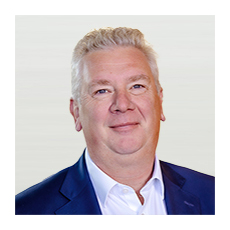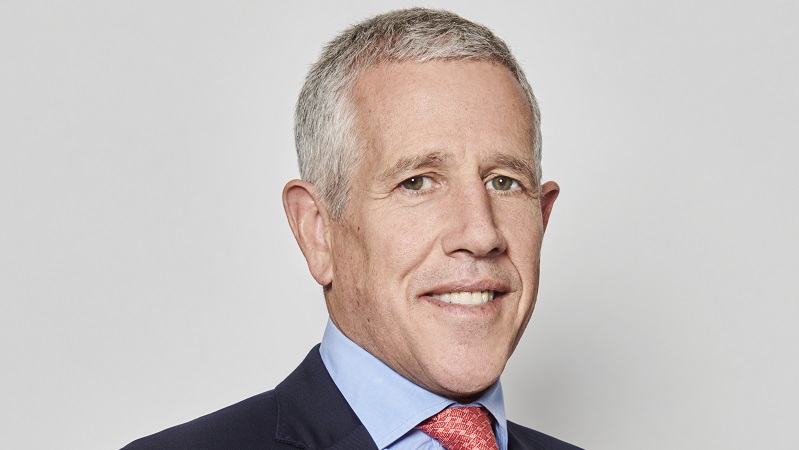In the latest in our regular series, Portfolio Adviser hears from Christopher Cade, head of UK sales at Sarasin & Partners (pictured below)
Which particular asset classes and strategies do you anticipate your intermediary clients focusing on for the remainder of 2024?

The key question for the second half of 2024 is not hard to frame. Should investors embrace the global soft economic landing narrative and add to equity risk, or is this the moment to step back and raise cash while sentiment is still high?
Persistent inflation means that interest rate cuts might be delayed as central banks try to finally squeeze inflation down to their preferred level of around 2%. This has caused bond yields to rise again and it also places a question mark over the outlook for some equities.
However, it’s by no means all bad news. Stronger economic growth is usually good for company earnings, and therefore good for equities and corporate bonds. To us, equities continue to be the most attractive asset class. Robust earnings and dividend growth, combined with the prospect of lower interest rates from mid-year, continue to be supportive, even after the rallies we have seen to date.
Corporate bonds appear attractive, but government bonds less so. A recent OECD report forecasts that debt issuance by 38 industrialised countries will rise by 12% to $15.8trn this year. This has been exceeded only once, in 2020, when governments were scrambling to support economies at the height of the pandemic. We are of the view that bond investors may start to demand even higher yields to compensate for the risks of holding government bonds.
Should end-investors – and, by association, asset managers – be thinking beyond equity and bond investments? Towards what?
Before looking beyond equities and bonds, it’s common sense to ensure that the core of the portfolio is genuinely fit for purpose. For long-term investors, insight into what is driving change in society is key. It is this that underlies our global thematic approach and gives us a lens to identify connections and opportunities that you could well miss by focusing on specific regions, sectors or investment styles such as growth or value.
See also: Track to the Future – with Trium Capital’s Donald Pepper
Beyond mainstream equities and bonds, we see an active role for alternative investments in a well-diversified portfolio, both from the perspective of enhancing returns and smoothing risk. We include a variety of alternative investments in our models, including income-earning assets such as infrastructure and renewable energy, defensive options such as low-volatility investment and trading strategies, and gold.
Having the ability to flex these as market and economic conditions change is crucial. For example, specialist trading strategies came into their own during the worst of the interest rate rises. More recently, the prospect of lower interest rates has increased the appeal of some income-earning alternatives with long-term cash flows.
To what extent do private assets and markets fit into your thinking? What are the current pros and cons for investors?
Deciding whether to allocate to private markets is not a straightforward decision. There is a much greater difference between gross and net returns in private markets than elsewhere, and investors need to decide whether the net results are worthwhile.
Given the considerable range of returns between managers, it’s crucial to be able to identify – and access – the best possible managers for your investment purposes. These are illiquid assets, with plenty of potential for investors to ‘marry in haste and repent at their leisure’. Investors should also consider how any ethical requirements might be met and monitored.
If one can manage the issues of manager selection, access, illiquidity, ethics and cost, it appears logical to us that long-term investors should consider private markets.
Opportunities for genuine diversification and for long-term growth from industries of the future are becoming scarcer in listed markets. If you wish to own an equity portfolio with similar overall risk, return, maturity and industry exposure characteristics to one of 20 years ago, today it would be made up of a mix of listed and unlisted investments.
Given client and regulatory pressure on charges, how is your business delivering value for money to intermediaries and end-clients?
As everyone knows, price is one thing and value is another. There is ongoing pressure on all fees, whether they be the costs of the underlying funds, DFM fees, platform fees and adviser fees which ultimately drive down the total cost of ownership for the underlying client. As long as the quality of the proposition and service is not impaired in this process, it has to be good for the end client. However, given that all of the component parts mentioned above are becoming increasingly commoditised, including the investment management in some cases, the differentiator has to be the service and support that we can offer intermediaries, equipping them with all the timely information that a client will need while trying to achieve their Investment goals.
See also: Track to the Future – with Mirabaud AM’s Liisa Juntunen
We carry out extensive value assessments across our products and services and make these available on our website for all to see. I would like to think that in addition to these quantitative measures, my team of sales professionals are the added qualitative value, working alongside advisers to build genuine long-term relationships rather than transactional arrangements. We are well aware advisers have many products and suppliers to choose from. We want to be the provider of choice to advisers, but we know we have to earn that privilege.
How much of your distribution is currently oriented towards climate change, net zero, biodiversity and other segments of sustainable investing? How do you see this approach to investing evolving?
Throughout our history, we have built a long track record of investing responsibly on behalf of our clients, as we believe this is the best way to achieve enduring value over the long term. ESG is fully integrated into all our investment processes. In terms of products and investment solutions: we cater for clients with no particular sustainability mandate, through those with specific ethical restrictions, such as our extensive charity client base. The common denominator of all our clients is that they seek solid risk-adjusted returns within the given mandate.
Especially over the last year when we saw investment performance dominated by the stellar performance of the ‘Magnificent 7’, we saw a distinct cooling of the market’s obsession with ESG investing. However, it does remain a crucial area of advice. We believe the key to this is the discovery process and making sure that any recommended product aligns with the end client’s views. In our view, this should be more of a discussion than a binary question, given that most clients will have a view on these issues as long as they are given the chance to express their views and have been given all the facts.
We also believe an active management approach is required when tackling these issues. As such, responsibly focused products in all its forms are definitely part of our distribution strategy, alongside our unconstrained products.
Sustainability Disclosure Requirements (SDR) is a game-changer in this space. We think it will enable clients and advisers to have confidence in the products and services offered in this area.
How are you now balancing face-to-face and virtual distribution? In a similar vein, how are you balancing working from home and in the office?
The number of face-to-face meetings and events has increased significantly over the last 12 months but is not yet back to pre-pandemic levels. It is easier, quicker and more sustainable to maintain an existing relationship virtually, but less effective when meeting someone for the first time as you do not get the same physical feedback. Through the move to more passive investing and consolidation in the market, there may be less need for a large distribution function in the future. However, the service you receive from an attentive, knowledgeable and helpful account manager is often a key differentiator for clients, and this is what we strive to offer.
See also: Track to the Future – with J. Safra Sarasin’s David Miles
The pandemic accelerated virtual communication so all of my team have all the technology at home and in the office to fulfil their roles and support advisers. Given the majority of my team are regionally based, communication has always been crucial, so no one feels isolated and unsupported. While we would like to see each other in person every day, the cost would be prohibitive it would not be very sustainable. This hybrid way of working meets our needs, and I do not think it will change in the foreseeable future.
What do you do outside of work?
Family and sport have always been an important part of my life. I have enjoyed many years playing rugby, cricket and now golf which is a great release from the pressures of work. My wife will probably disagree, but it is important for me to decompress through sport to recharge the batteries to start the week refreshed!
What is the most extraordinary thing you have seen?
Other than the birth of my two children, my wife and I were lucky enough to do some whale watching in Monterey, California, getting close enough to see the intelligence in the eyes of a couple of inquisitive humpbacks – extraordinary.
Looking a little further ahead, in what ways do you see the asset management sector evolving over the next few years?
There will definitely be challenges to overcome, AI is a threat to jobs in finance generally but has particular challenges for asset management. Most people would agree that the fund market is oversupplied, so I expect consolidation in that area. However, people still need financial advice and someone to help them achieve their financial goals, so I see wealth management as a resilient area. Passive investing will continue to make gains, but truly active managers where value can be demonstrated have a place as well.









